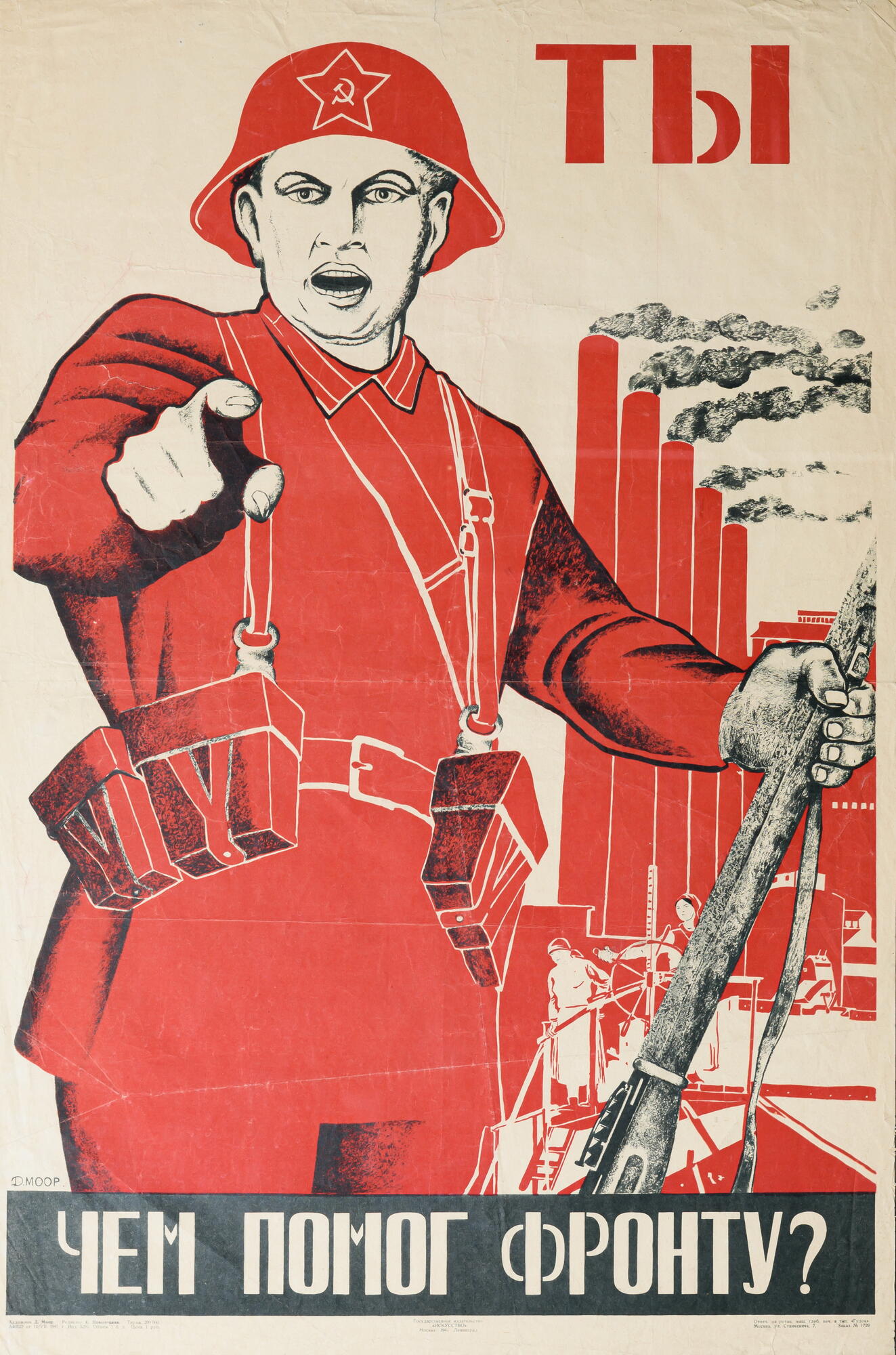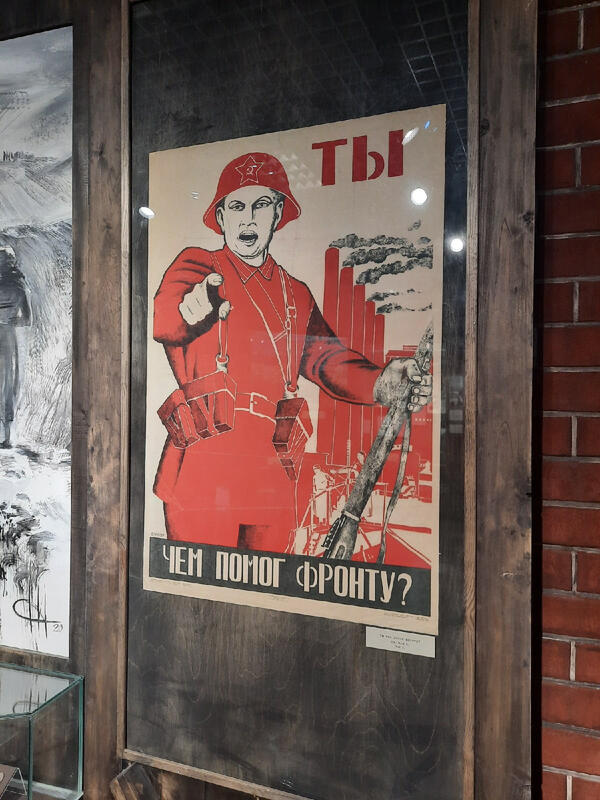During the Great Patriotic War there were three major fronts: the war, labor and ideological fronts. Effective military propaganda was one of the driving forces of the future victory. The media for transmitting propaganda messages included newspapers, movies, radio broadcasting and posters.
During the wartime period there were millions of posters printed. The Headquarters of the Supreme High Command took publishing posters on a variety of topics very seriously and saw posters as an important tool that could help in mobilization efforts, morale-boosting and instilling the Soviet people with a patriotic outlook.
Interestingly, the poster “Have you signed up as a volunteer?” was created in 1920 and referred to the Russian Civil War. The poster’s designer, the artist Dmitry Moor, updated the image and slogan at the beginning of the war: “How have you helped the front?” Both posters were used during the war.
The most common poster from the first days of the war was “The Motherland is calling us!” by Irakli Toidze. The designer of the poster recalled that he made the first sketches of his wife’s face for the generalized image of the Motherland when they heard the first message of the Soviet Information Bureau about the beginning of the war. There were millions of copies of this poster, which was known to many Soviet people since childhood.
After the turning point during the war, the mood and style of the poster changed, it became imbued with optimism and humor. In 1944, in the poster “Let’s get to Berlin!” Leonid Fedorovich Golovanov created the image of a hero inspired by Vasily Terkin, the character of the poem of the same name by Aleksandr Tvardovsky.
After the counteroffensive near Moscow and Stalingrad, the Soviet soldiers realized their strength, unity and the sacred nature of their mission. Many posters were dedicated to these great battles, as well as the Battle of Kursk, where the enemy was caricatured and the Nazi’s aggression, which ended in failure, was ridiculed.
The poster at that time was also needed to those who lived in the occupied territories. We know from the memoirs of veterans that in the occupied areas patriots pasted posters from the “TASS” series on fences, sheds, and houses that the Germans were using. The population, deprived of Soviet radio and newspapers, learned the truth about the war from these images that appeared from nowhere.
During the wartime period there were millions of posters printed. The Headquarters of the Supreme High Command took publishing posters on a variety of topics very seriously and saw posters as an important tool that could help in mobilization efforts, morale-boosting and instilling the Soviet people with a patriotic outlook.
Interestingly, the poster “Have you signed up as a volunteer?” was created in 1920 and referred to the Russian Civil War. The poster’s designer, the artist Dmitry Moor, updated the image and slogan at the beginning of the war: “How have you helped the front?” Both posters were used during the war.
The most common poster from the first days of the war was “The Motherland is calling us!” by Irakli Toidze. The designer of the poster recalled that he made the first sketches of his wife’s face for the generalized image of the Motherland when they heard the first message of the Soviet Information Bureau about the beginning of the war. There were millions of copies of this poster, which was known to many Soviet people since childhood.
After the turning point during the war, the mood and style of the poster changed, it became imbued with optimism and humor. In 1944, in the poster “Let’s get to Berlin!” Leonid Fedorovich Golovanov created the image of a hero inspired by Vasily Terkin, the character of the poem of the same name by Aleksandr Tvardovsky.
After the counteroffensive near Moscow and Stalingrad, the Soviet soldiers realized their strength, unity and the sacred nature of their mission. Many posters were dedicated to these great battles, as well as the Battle of Kursk, where the enemy was caricatured and the Nazi’s aggression, which ended in failure, was ridiculed.
The poster at that time was also needed to those who lived in the occupied territories. We know from the memoirs of veterans that in the occupied areas patriots pasted posters from the “TASS” series on fences, sheds, and houses that the Germans were using. The population, deprived of Soviet radio and newspapers, learned the truth about the war from these images that appeared from nowhere.




